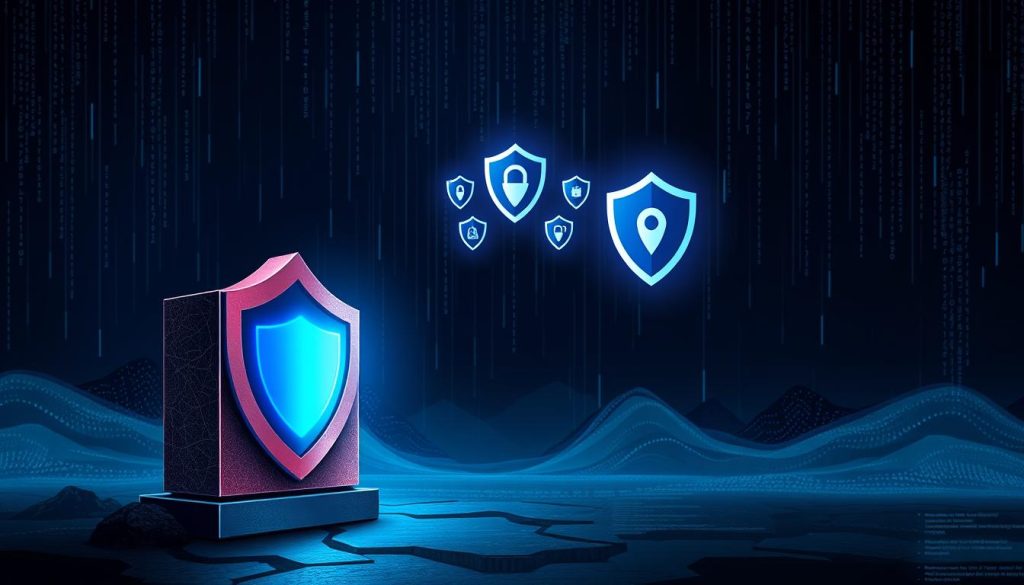Recent investigations reveal that the Lumma infostealer malware is specifically targeting users in New Zealand, elevating the urgency for robust cybersecurity measures. This malware threat has been recognised for its ability to compromise sensitive information, placing both individuals and organisations at risk. As the landscape of cyber threats evolves, so does the sophistication of malware attacks, making it crucial for the community to remain vigilant and informed about such dangers. Increased awareness of Lumma infostealer malware is essential in fortifying New Zealand cybersecurity efforts against this rising tide of infostealer malware.
Understanding Lumma Infostealer Malware
Lumma infostealer malware is classified as a type of malicious software engineered for data theft. This specific malware seeks to compromise sensitive information like login credentials, financial data, and personal details from infected devices. In contrast to traditional malware that may aim to disrupt services or damage systems, the primary goal of infostealers is to gather valuable data. This differentiation makes them particularly appealing to cybercriminals.
Understanding the Lumma infostealer malware definition is crucial for individuals and organisations alike. By recognising its mechanisms, it becomes possible to implement effective defence strategies. The inner workings of infostealers often involve sophisticated techniques for infiltration and data extraction, heightening the necessity for cybersecurity measures.
The prevalence of cybercrime has facilitated the rise of these data-harvesting threats. With increasing amounts of personal and financial information stored online, infostealers frequently take advantage of these vulnerabilities. Consequently, an informed approach to cybersecurity becomes imperative for safeguarding against potential data theft.
The Rise of Infostealers in Cybercrime
The landscape of cybercrime continues to evolve, with infostealer malware growth emerging as a significant concern. As businesses and individuals increasingly depend on digital platforms for communication and transactions, these malicious actors exploit the vulnerabilities inherent in these systems. Infostealer malware specifically targets sensitive information, such as login credentials and personal data, which can be sold on the dark web.
Reports indicate a staggering increase in the frequency of these attacks, demonstrating distinct cybercrime trends. Analysts have observed a 50% year-on-year rise in reported infostealer incidents, highlighting the urgent need for robust security measures. Such an escalation correlates with the increasing number of data breaches affecting organisations across various sectors. Cybercriminals capitalise on these breaches to obtain valuable information, further fuelling the demand for infostealer malware.
Lumma Infostealer Malware: A New Threat in New Zealand
Recent reports indicate that Lumma infostealer malware poses a substantial threat to users in New Zealand. This emerging danger brings attention to the growing landscape of New Zealand cyber threats, particularly as individuals rely more on online banking and e-commerce services.
The Lumma malware impact is particularly concerning as it exploits users’ trust in digital platforms, potentially leading to severe data breaches. Cybersecurity experts express that proactive measures are essential for protecting data security. As the sophistication of attacks continues to evolve, the need for heightened awareness among New Zealand users becomes pressing.
Given the increasing frequency of such threats, it is crucial to foster a culture of vigilance and preparedness within the community. Understanding the implications of Lumma malware could aid individuals in safeguarding their information and reducing vulnerability to cyber attacks.
How Lumma Infostealer Malware Operates
Lumma infostealer malware has become a significant concern due to its sophisticated methods of operation. Understanding its functionality provides insights into how cybercriminals exploit vulnerabilities for data theft. The malware employs specific techniques for infiltration and stealthy data extraction that are increasingly troubling to users worldwide.
Key Features of Lumma Infostealer Malware
The Lumma operations primarily target users through various deceptive tactics. Common infostealer malware methods include:
- Phishing emails that trick users into clicking malicious links
- Malware-laden attachments that silently install the malware
- Utilization of social engineering tactics to gain user trust
Once installed, Lumma operates discreetly, capturing keystrokes and taking screenshots. These actions enable the malware to collect sensitive personal information without raising alarms among users.
Methodologies Employed by Cybercriminals
Operators of Lumma infostealer malware have developed an array of innovative data extraction techniques. Their approach often involves:
- Infiltrating devices through established backdoor methods
- Utilizing command-and-control servers to exfiltrate stolen data
- Employing obfuscation techniques to evade detection by security software
This careful and methodical strategy allows cybercriminals to thrive while individuals remain unaware of the lurking threats.
Recent Incidents Involving Lumma Infostealer Malware
The emergence of Lumma incidents has raised a multitude of concerns among users in Australia and New Zealand. Recent user reports indicate an alarming rise in cases attributed to this infostealer malware, resulting in notable breaches of personal data. These incidents underscore a pressing need for increased cybersecurity awareness.
Reports from Affected Users
Several users across New Zealand have detailed their experiences with Lumma infostealer malware, describing significant breaches. Common themes in these user reports include:
- Unusual account activity, often manifesting as unexpected log-ins and transactions.
- Unauthorized transactions affecting bank accounts, signalling potential financial loss.
- Privacy violations, with compromised personal data leading to further exploitation.
These reports illuminate a growing vulnerability within the user base, as many may not be equipped with the necessary cybersecurity knowledge to identify or mitigate threats.
Impact on Australian and New Zealand Users
The malware impact on users in both countries has been profound. Individuals are facing:
- A surge in phishing attempts leveraging stolen credentials.
- Heightened anxiety regarding personal and financial security.
- Increased demand for effective protective measures as cybercriminals evolve their tactics.
The trend in Lumma incidents marks a significant shift in the landscape of cybersecurity, demanding a collective response to protect vulnerable populations.
Preventative Measures Against Malware Attacks
To effectively mitigate the risks associated with malware such as Lumma, adopting robust malware prevention strategies is critical. Individuals and organisations should prioritise regular software updates, ensuring that all systems operate with the latest security patches. This practice not only addresses known vulnerabilities but also fortifies overall data integrity.
Utilising strong passwords is another essential aspect of effective cybersecurity measures. Passwords should be complex, combining upper and lower case letters, numbers, and special characters. Implementing multi-factor authentication adds an additional layer of security, making it increasingly difficult for cybercriminals to gain unauthorised access to sensitive information.
Frequent security audits can play a vital role in strengthening an organisation’s defence against malware. These audits help identify potential vulnerabilities, equipping teams with the insights needed to address issues proactively. Alongside these audits, following comprehensive data security tips, such as limiting access to sensitive data, can ensure that information remains secure and protected from malicious actors.

How to Protect Yourself from Lumma Infostealer Malware
As cyber threats such as Lumma Infostealer malware proliferate, incorporating effective strategies for protection becomes essential. Strengthening digital security involves using reliable antivirus solutions and adopting safe browsing practices. Following pertinent cybersecurity tips can significantly mitigate risks.
Utilising Antivirus Software
Installing reputable antivirus software with real-time protection plays a vital role in defending against malware threats. Such tools frequently offer capabilities to detect and neutralise threats before they escalate into serious issues. Regular scans and updates ensure these programs remain effective against evolving malware like Lumma, providing robust antivirus protection for users.
Staying Safe While Browsing
Practicing safe browsing habits is equally important in protecting personal information from cybercriminals. Users should:
- Avoid clicking on suspicious links or downloading unsolicited attachments.
- Ensure web addresses begin with “https://” to verify site security.
- Regularly update web browsers to leverage the latest security features.
These safe browsing practices, coupled with strong cybersecurity tips, can contribute to a safer online experience and reduce vulnerability to threats.
The Importance of Cybersecurity Awareness
In an era where technology permeates every aspect of life, cybersecurity awareness emerges as a critical component for ensuring digital safety. As cyber threats evolve, individuals equipped with the right knowledge can significantly enhance their capacity to defend against various attacks. Increased user education plays a pivotal role in fostering an environment where people are informed about potential dangers and how to mitigate them.
Educational institutions, organisations, and community groups should prioritise training initiatives aimed at developing skills that enable individuals to identify suspicious activities online. These programs empower individuals, providing them with tools to respond appropriately to emerging threats. Ultimately, a collectively informed community can establish a fortified front against cybercriminals, promoting a culture of vigilance and resilience.
Governmental Response to Malware Threats
In light of the increasing prevalence of malware threats such as Lumma, both Australian and New Zealand governments have been proactive in their government action. By instituting comprehensive cybersecurity initiatives, authorities aim to create a robust framework that not only addresses these digital threats but also encourages organisational responsibility. Key efforts include the implementation of malware legislation that targets negligent practices within corporations, thereby fostering a culture of accountability in cybersecurity.
Additionally, collaboration between various sectors, including law enforcement agencies, plays a critical role in combating the transnational nature of cybercrime. This multi-faceted approach enhances the capabilities of governments in tackling malicious activities effectively. As threats evolve, continuous evaluation and improvement of these initiatives remain essential to safeguard citizens and businesses alike.

The Role of Cybersecurity Firms in Combatting Malware
Cybersecurity firms play a critical part in the ongoing battle against malware threats. With the rise of sophisticated cyber attacks, these firms focus on developing comprehensive strategies to protect users and organisations across Australia and beyond. Their commitment to incorporating innovative technologies demonstrates a proactive approach to cybersecurity.
Innovative Solutions and Technologies
In the face of evolving cyber threats, cybersecurity firms provide essential tools and solutions. They attract attention for their expertise in threat intelligence platforms, which enable organisations to analyse potential risks in real-time. Utilising advanced analytics and machine learning, these firms create systems capable of preemptively identifying and neutralising malware. This approach significantly enhances the overall security posture of enterprises and fosters a more resilient digital environment.
Collaboration with Law Enforcement Agencies
The role of cybersecurity firms extends beyond technology to include collaboration with law enforcement agencies. This partnership is vital for sharing crucial information and intelligence regarding cybercrime trends. By working together, these entities can coordinate efforts to disrupt criminal activities and apprehend cyber criminals. Such law enforcement collaboration is instrumental in developing a unified response to malware threats, ensuring a comprehensive strategy against cyber attacks.
Future of Cybersecurity in New Zealand
The New Zealand cybersecurity future depends heavily on the ability to adapt to emerging threats. As cybercriminals continue to evolve their tactics, a proactive stance becomes essential. Investment in advanced cybersecurity education and technology is crucial for both individuals and organisations.
As digital landscapes expand, so do the challenges associated with digital safety. Awareness among citizens and businesses will lead to the development of comprehensive strategies aimed at mitigating risks. By fostering stronger partnerships between government entities, private sectors, and educational institutions, New Zealand can create a robust framework to combat potential threats.
Continuous monitoring and updating of cybersecurity measures will be vital in responding effectively to new forms of attacks, resulting in a more resilient digital environment. The commitment to addressing these emerging threats will not only enhance national security but will also encourage a culture of vigilance and empowerment within the community.
Community Engagement in Cybersecurity Education
Engaging the community in cybersecurity education is crucial for instilling a collective commitment to online safety in Australia and New Zealand. Local initiatives, such as workshops and seminars, play a vital role in enhancing awareness among various demographics, addressing the growing need for a more informed public regarding digital threats. By focusing on community cybersecurity education, these programs can empower individuals to protect themselves and others from potential risks.
User engagement is essential when designing effective digital awareness programs. Tailoring content to meet the unique needs of different community groups ensures that the education provided resonates and is practical. This approach not only fosters a deeper understanding of cybersecurity but also encourages participants to adopt safer online behaviours, thus creating a culture of vigilance within the community.
As communities become more involved in cybersecurity education, the foundation for a resilient population against digital threats strengthens. By promoting active participation and encouraging continued learning, these initiatives will develop a robust support network, ultimately contributing to a safer digital environment across New Zealand and Australia.
